In Pictures: Sick Gulf residents blame BP
Over a year after the BP oil disaster, many Gulf Coast residents have been reporting serious health problems.
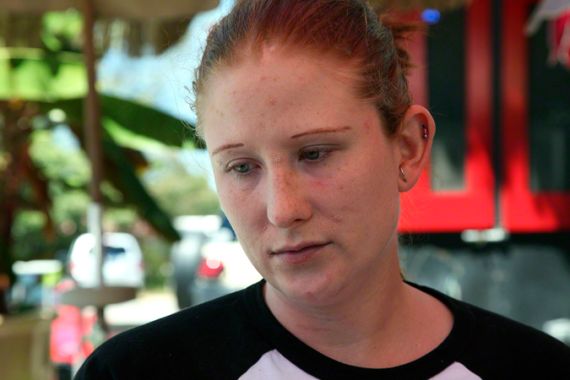
Published On 3 Oct 2011
In the wake of BP’s oil disaster in the Gulf of Mexico, countless Gulf Coast residents have been made sick by what they believe to be chemicals from BP’s oil and toxic dispersants.
Their situation is made worse by BP not paying out health-related claims, despite the oil giant’s promises to “make things right” and “make people whole”.
To read more about their situation, click here.
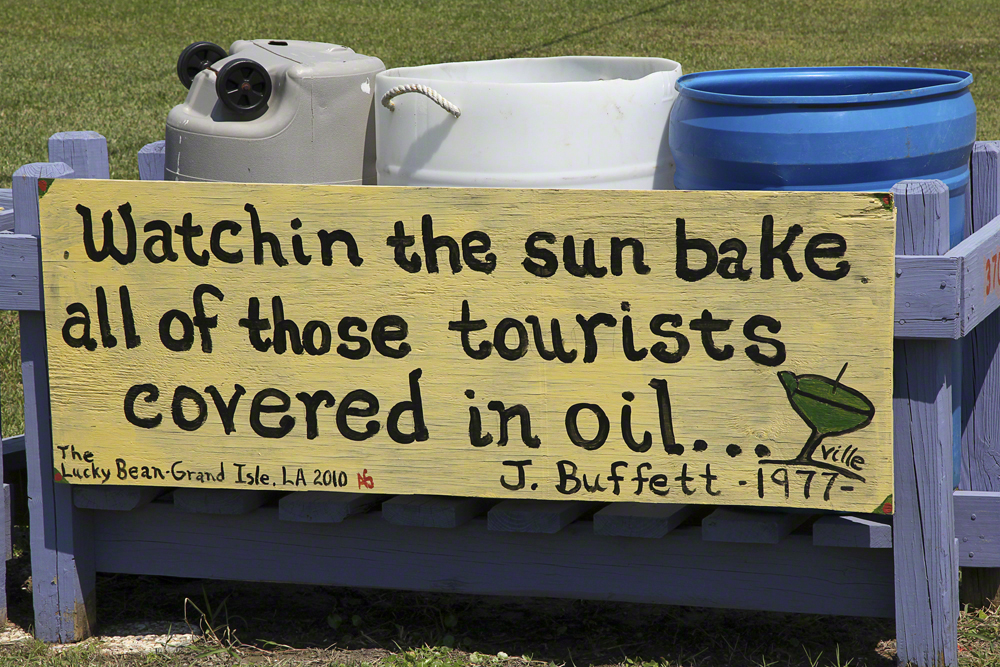 |
| 1) Many of the toxic chemicals released into the environment as a result of BP’s oil disaster that began on April 20, 2010, are now being found in the blood of Gulf Coast residents and visitors [Erika Blumenfeld/Al Jazeera] |
 |
| 2) Fritzi Presley, a 57-year-old singer/songwriter from Long Beach, Mississippi, has been sick from exposure to chemicals used in BP’s oil and dispersants, and has tested positive for m,p-Xylene, hexane, and ethylbenzene in her bloodstream [Erika Blumenfeld/Al Jazeera] |
 |
| 3) On September 7, 2011, Al Jazeera photographed 14 dead birds within 300 metres of each other, in the same area where oil and oil sheen was found on Long Beach, Mississippi [Erika Blumenfeld/Al Jazeera] |
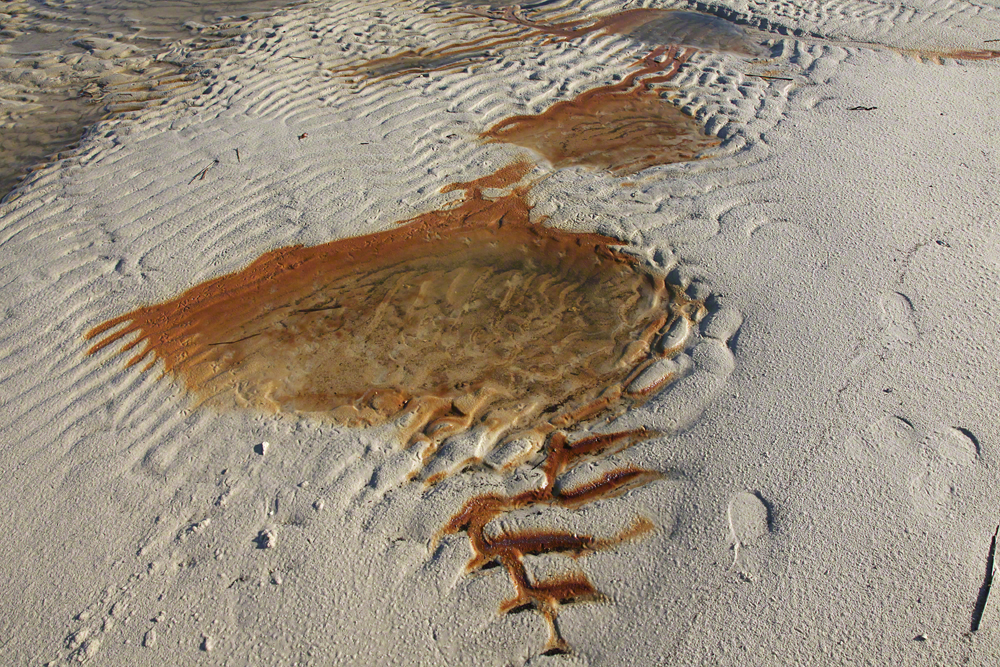 |
| 4) Also on September 7, 2011, Al Jazeera found evidence of what is likely dispersed oil along the shore at Long Beach, Mississippi [Erika Blumenfeld/Al Jazeera] |
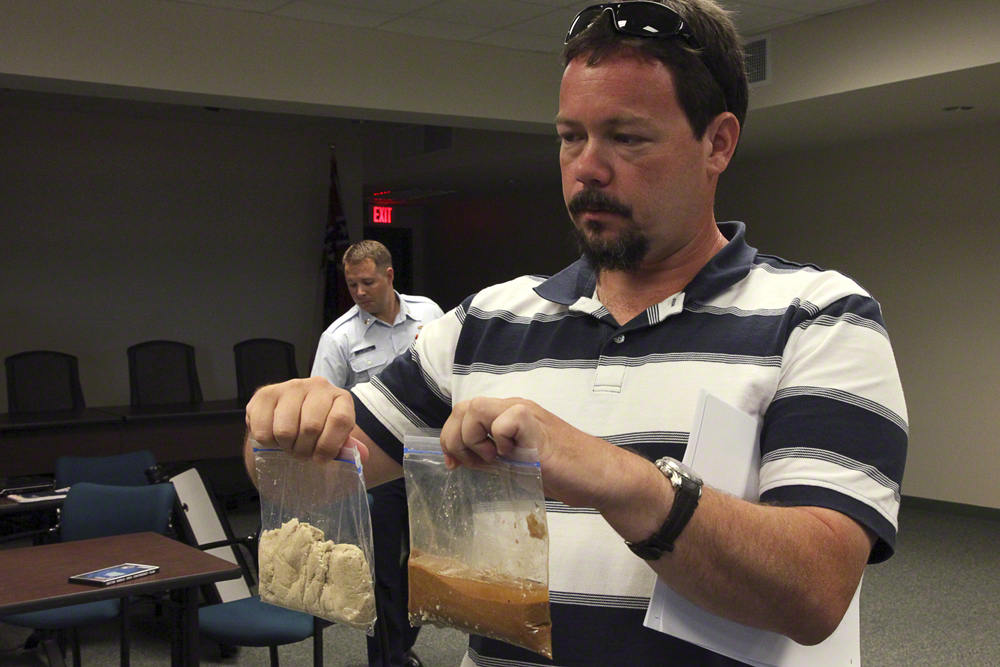 |
| 5) Charles Taylor, from Pass Christian, Mississippi, attended a US Coast Guard “Area Contingency Plan” meeting. During the meeting Taylor held up two bags filled with sand, one that is likely contaminated by BP’s dispersed oil, and the other containing clean sand [Erika Blumenfeld/Al Jazeera] |
 |
| 6) At the “Area Contingency Plan” meeting, US Coast Guard officials at the meeting dismissed complaints about health concerns made by local residents, and admitted to Al Jazeera that in future oil disasters, their contingency plan includes the use of dispersants [Erika Blumenfeld/Al Jazeera] |
 |
| 7) Thick, silvery, iridescent oil sheen found on September 7, 2011, on the sand at Pass Christian, Mississippi [Erika Blumenfeld/Al Jazeera] |
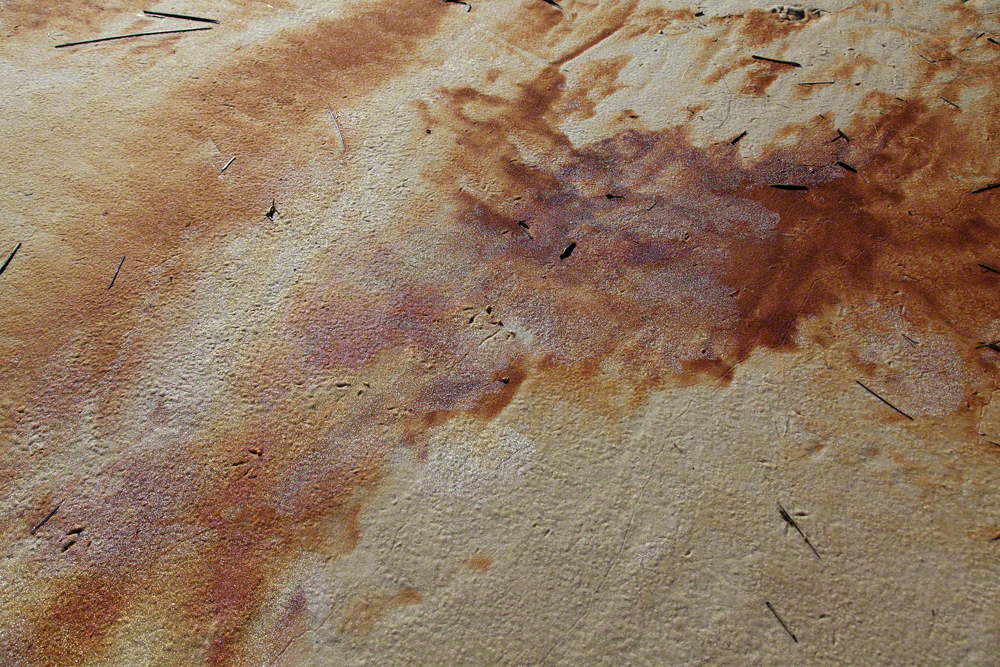 |
| 8) On September 7, 2011, Al Jazeera documented silvery iridescent oil sheen mixed with the typical rusty colour of dispersed oil along the shore at Long Beach, Mississippi. Looking closely, you can see the footprints of birds through the toxic sand [Erika Blumenfeld/Al Jazeera] |
 |
| 9) Daisy Seal, a 30-year-old living in Long Beach, Mississippi and the mother of an eight-year-old son, has severe skin rashes, respiratory issues, headaches, nosebleeds and has had two miscarriages since oil from BP’s oil disaster began washing up along the shore in her hometown. Her blood has tested positive for 6 out of the 10 chemicals present in BP’s oil that were tested for [Erika Blumenfeld/Al Jazeera] |
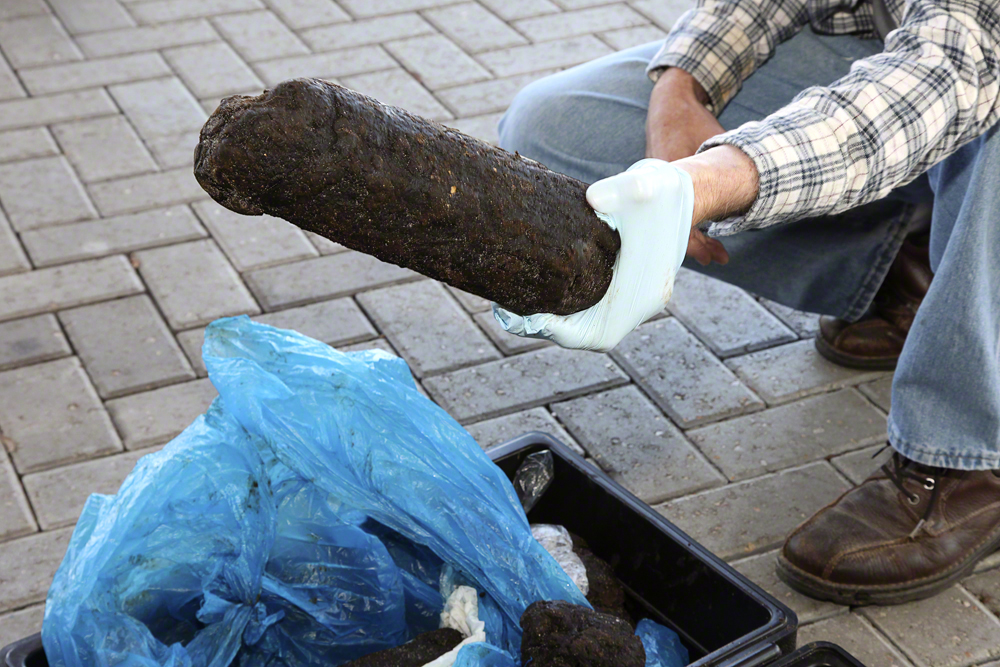 |
| 10) After the Coast Guard meeting in Biloxi, Mississippi on September 7, 2011, Mississippi resident John Gooding stood outside holding large tar logs that he found on the beaches nearby, pleading that the officials in the meeting come to look at the toxic mess that is still on the beaches. The officials did not heed his request [Erika Blumenfeld/Al Jazeera] |
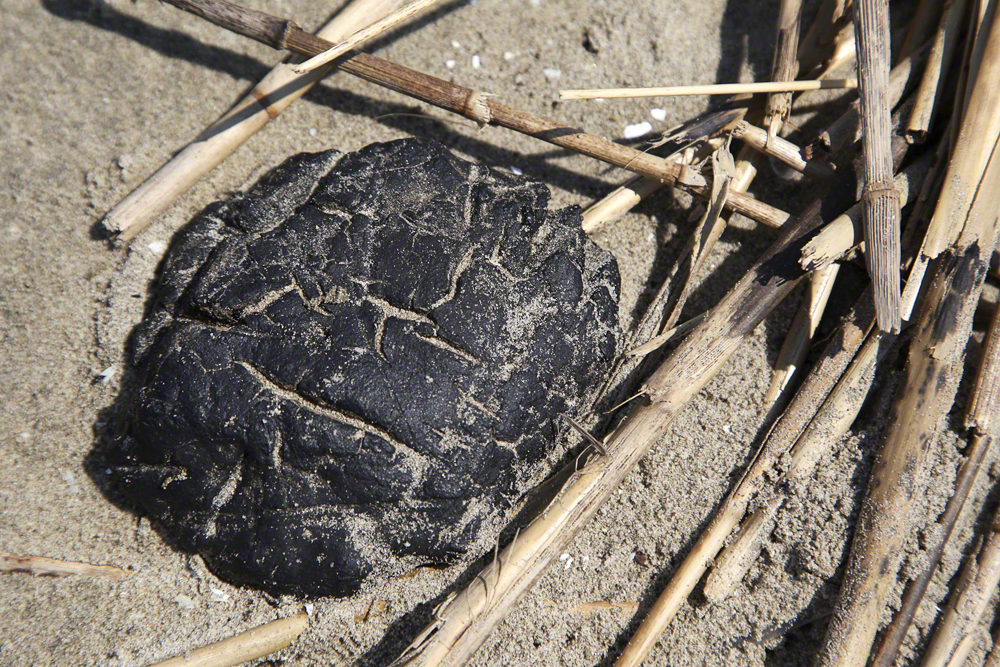 |
| 11) On September 13, 2011, just days after the Grand Isle State Park in Grand Isle, Louisiana was reopened to the public, Al Jazeera found large fist-sized tar balls like this one scattered along the park’s shoreline [Erika Blumenfeld/Al Jazeera] |
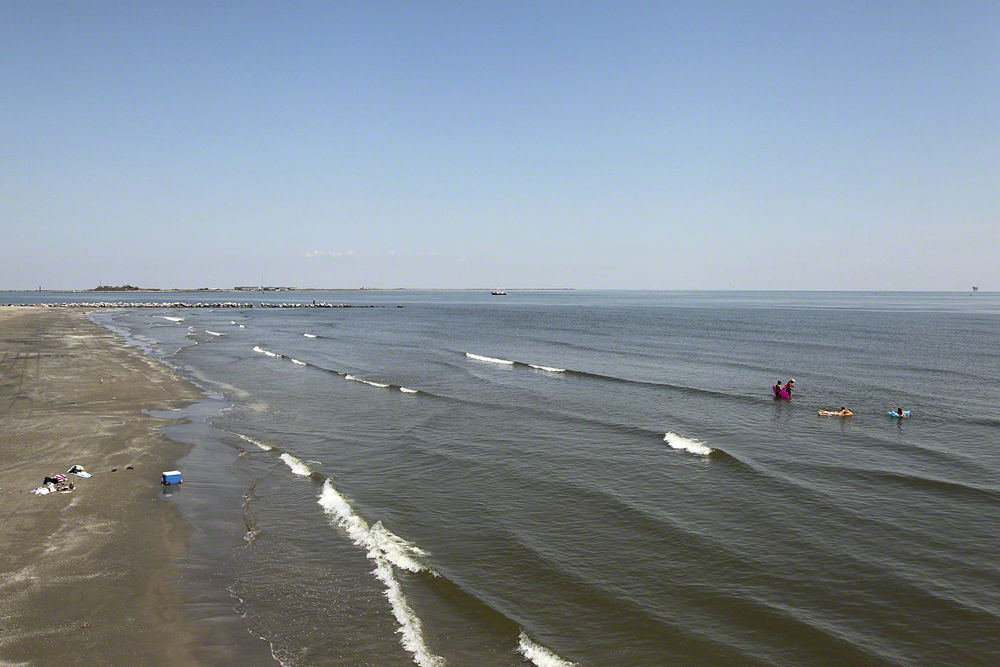 |
| 12) People swimming at Grand Isle State Park beach, where Al Jazeera found large tar balls and dead wildlife. On the day that this photo was taken, September 13, 2011, two nearby beaches were closed after massive amounts of oil was found just inches beneath the sand. Al Jazeera photographed these beaches as well, and a photo gallery of these images can be found by clicking here [Erika Blumenfeld/Al Jazeera] |
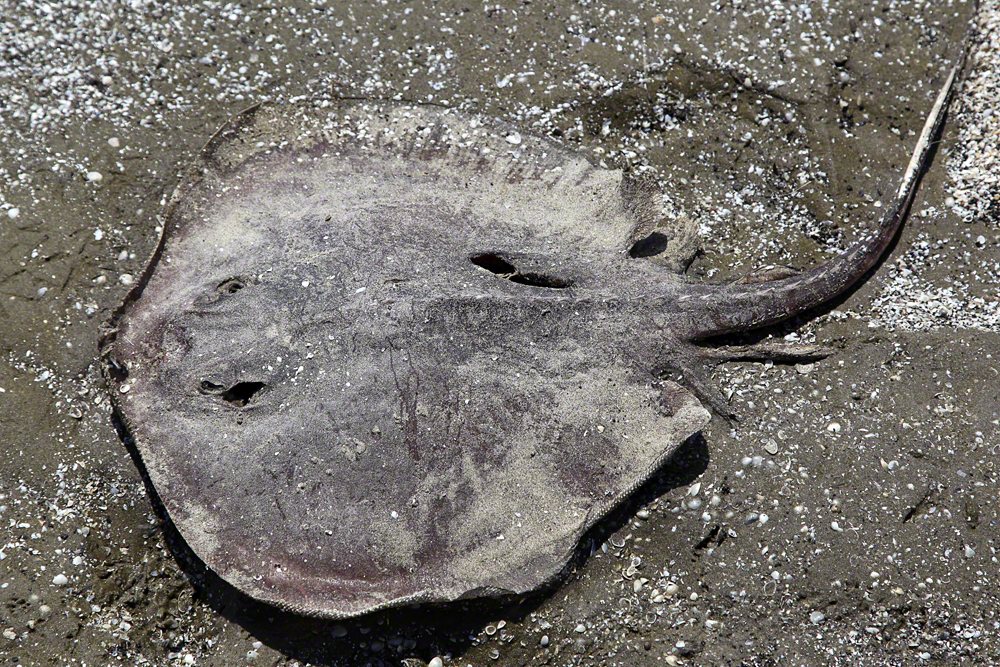 |
| 13) In recent months, it has become more common to see dead wildlife along the shores of beaches contaminated by oil and tar balls. Al Jazeera found two dead stingrays within a short distance of one another at Grand Isle State Park beach in Grand Isle, Louisiana on September 13, 2011 [Erika Blumenfeld/Al Jazeera] |
 |
| 14) Whether or not public health issues will continue along the Gulf Coast in the wake of the BP oil disaster remains yet to be seen. To date, there has been no acknowledgement of these health issues by local or national officials, and neither the US government nor BP has provided health compensation or treatment aid to affected Gulf Coast residents [Erika Blumenfeld/Al Jazeera] |
Source: Al Jazeera